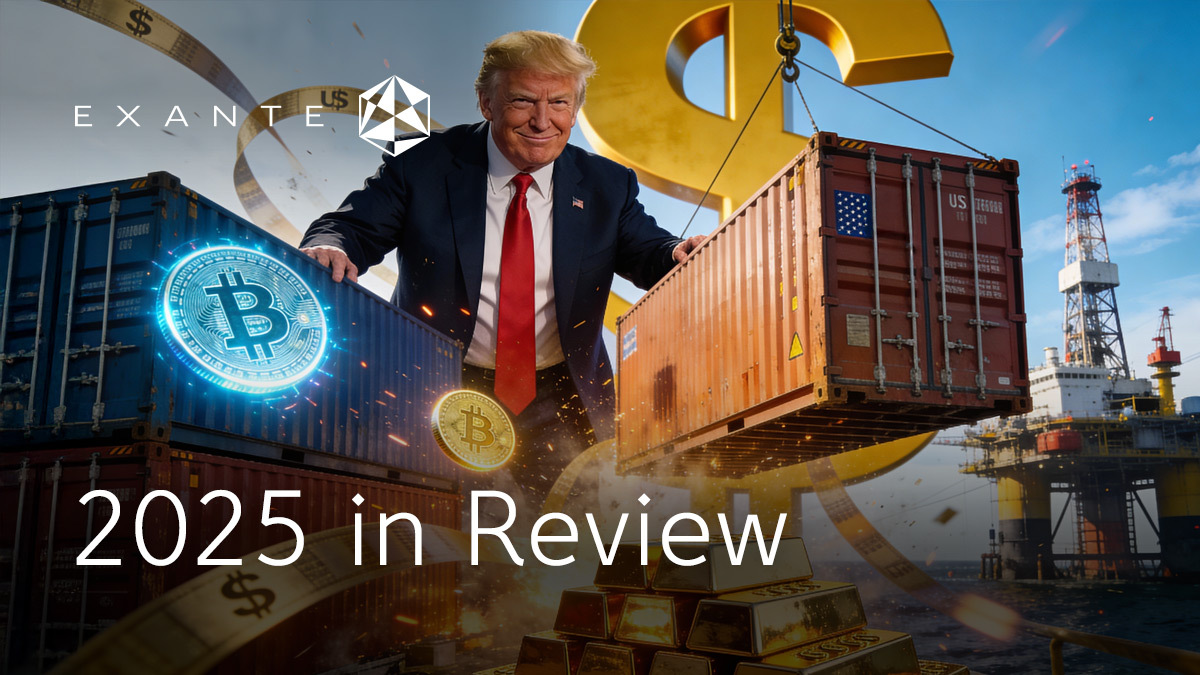
Investors buy the dip

After 10 days Bitcoin has reversed and is back over $70,000 after investors appeared to have taken profits after an amazing bull run. This resurgence in Bitcoin interest is evident not only in the price of Bitcoin, but also in interest in BTC ETFs. Spot Bitcoin ETFs rose on Monday, accumulating $15.4 million according to data from Farside. This data showed that Fidelity’s FBTC led the inflows, collecting $261.8 million, followed by BlackRock’s IBIT, which amassed $35.5 million. Other funds like BITB, BTCO, EZBC, and BRRR received between $11 million and $20 million each. Meanwhile, Grayscale’s ETF (GBTC) continued to experience outflows, losing just over $350 million. This was a significant change from last week, which saw a cumulative outflow of $887.6 million from Spot Bitcoin ETFs, largely attributable to large withdrawals from GBTC. However, despite last week’s global response to the drop in ETF interest, EXANTE clients have proven to be more optimistic than most investors. They reduced their investment in Spot Bitcoin ETFs by a significantly smaller amount, only a 0.6% reduction, compared to the wider market at -8.4%.

It also appears that EXANTE’s clients have used the increased outflows experienced last week as an opportunity to buy the dip. This indicates that they do have confidence in the ability of the cryptocurrency to not only recover, but to reach new heights. Their optimism may be well founded as inflows could gather pace as the quarter draws to a close.

What’s behind the Bitcoin dip?
Last week saw a significant drop in Bitcoin with Coinbase noting that net outflows amounted to $836 million between18 March and 21 March. Bitcoin slipped below $63,000 last week before recovering to just over $70,000 as of 26 March. It is still not completely clear why Bitcoin dipped. It might have been set off by a flash crash on crypto exchange BitMEX due to a massive sell order. It may have been due to uncertainty around the Fed’s interest rate decision and new projections for rate cuts. It may also be due to the continued outflows from Grayscale Bitcoin Trust. Outflows from the Grayscale Bitcoin Trust reached $1.83 billion over 4 days. However, according to Coinbase, the reason for the Grayscale sell-off isn’t necessarily obvious. Although GTBC does charge higher fees than other funds, the continuing outflows in GTBC may also be partially due to the bankruptcy of Genesis Global, amounting to the sale of 35.9 million GBTC shares. Coinbase said it's not clear whether the recent GBTC outflows are linked to these sales, and that “we can only infer that the size and scope of the change in GBTC shares outstanding coincide with recent developments on Genesis’ payment obligations.”
As noted by Coinshares, new ETF issuers in the US did see $1.1bn of inflows last week. Other digital currencies also saw mixed results last week. According to Coinshares estimates: Ethereum, Solana, and Cardano saw outflows of $34m, $5.6m and $3.7m respectively. The rest of the altcoin space experienced net inflows of $16m, with Polkadot receiving $5m, Avalanche $2.9m, and Litecoin US$2m.
Where to next?
Is Bitcon going to continue to yo-yo in price? Or, given that we are seeing a re-emergence of inflows, will Bitcoin continue to reach new heights?
The sharp drop in major cryptocurrencies’ prices had sparked an increase in liquidations in the derivatives market. However, despite the sell signals that appeared, there may be reasons to just view this as short term volatility, with the upward trend expected to continue. The surge on Monday suggested a shift in sentiment, potentially marking the end of any correction phase.
In the derivatives sector, outstanding contracts — or open interest — at the Chicago Mercantile Exchange (CME) Bitcoin futures market has reached over 32,000 as of 25 March. And global interest in Bitcoin and Spot Bitcoin ETFs may continue to rise as the London Stock Exchange (LSE) said this past Monday, 25 March, that it will start a marketplace for bitcoin and ether exchange-traded notes (ETNs) and will start accepting applications from 8 April. The UK’s regulator, the Financial Conduct Authority, said it would allow Recognized Investment Exchanges to create a listed market segment for ETNs earlier this month.
The volatility of Bitcoin remains a significant concern for investors and therefore risk tolerance should be considered along with potential exposure to other layers of risk. However, as more and more global regulators continue to accept the adoption of these new Bitcoin-backed financial products, which is a recognition of the cryptocurrency's potential within the traditional financial ecosystem, there will likely be more, not less, interest by investors of all sizes and types, thereby cementing Bitcoin and other digital currencies within the traditional financial landscape.
While every effort has been made to verify the accuracy of this information, EXT Ltd. (hereafter known as “EXANTE”) cannot accept any responsibility or liability for reliance by any person on this publication or any of the information, opinions, or conclusions contained in this publication. The findings and views expressed in this publication do not necessarily reflect the views of EXANTE. Any action taken upon the information contained in this publication is strictly at your own risk. EXANTE will not be liable for any loss or damage in connection with this publication.
本文提供給您僅供資訊參考之用,不應被視為認購或銷售此處提及任何投資或相關服務的優惠招攬或遊說。金融商品交易涉及重大損失風險,可能不適合所有投資者。過往績效不代表未來表現。




